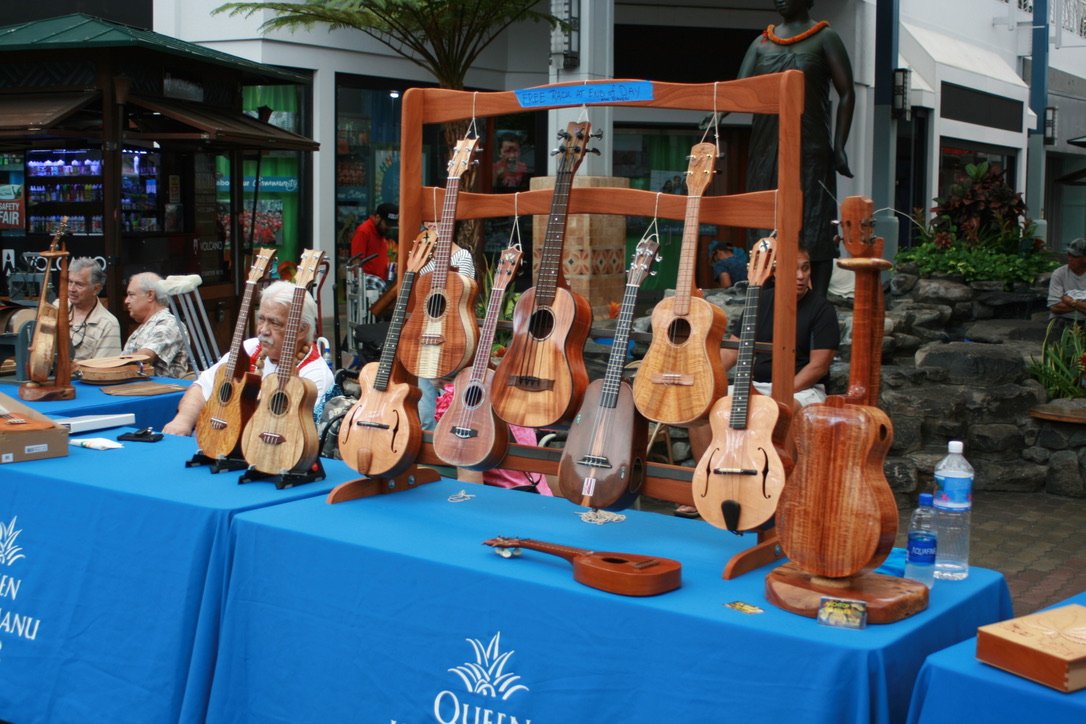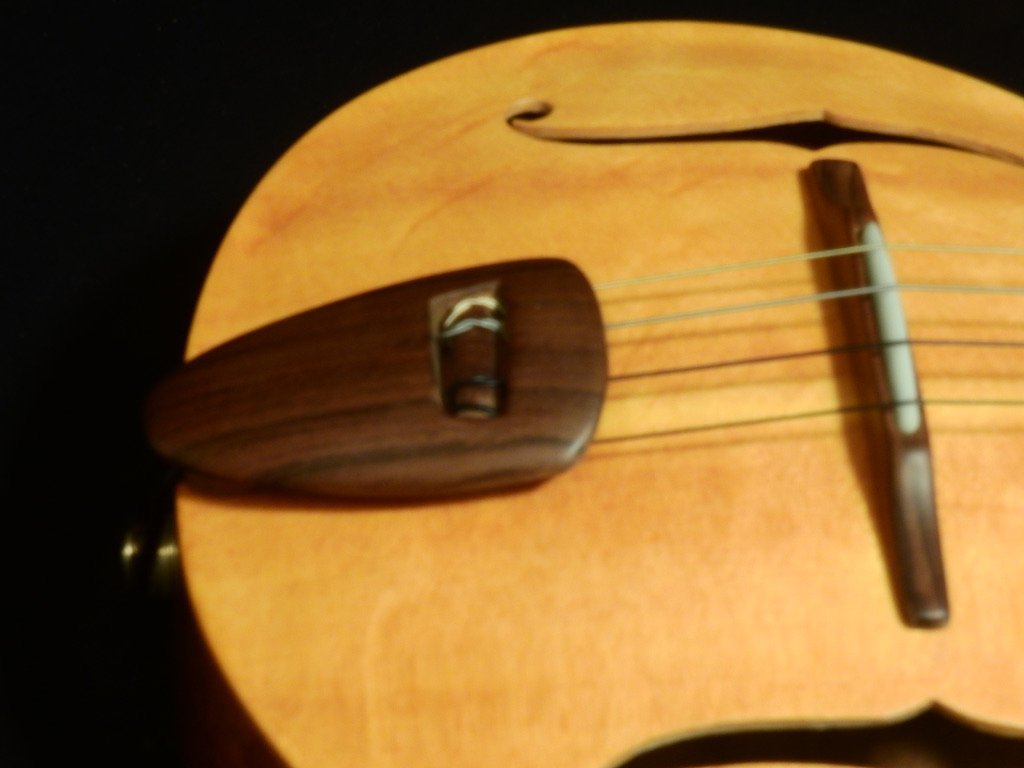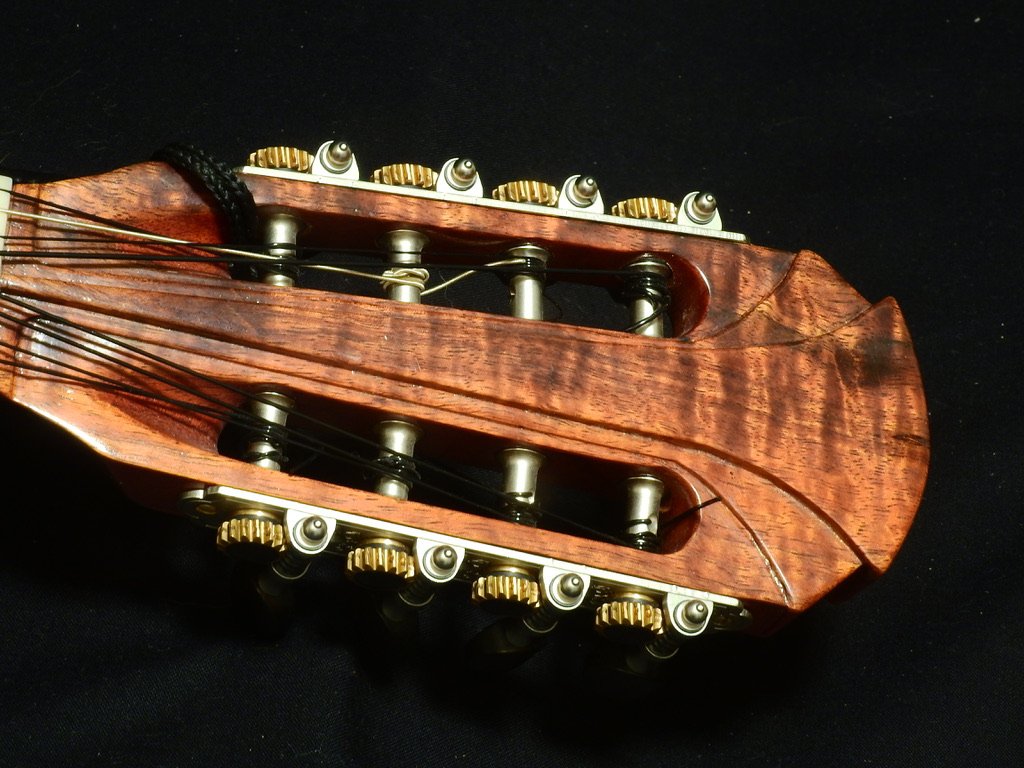
Winter Time Blues
Beating the mid winter blues with a little colorful snow sculpture in the front yard.
Growing Pains

Passing the Knowledge
Knowledge is Power. Pass it On.

The Joy of the Sale

TAKING NOTES

Design

Tailpieces

ACTION !

Headstock Variations

The Neck / Body Union
One technique for the neck / body union

INLAY DAY
Fretboard Inlays for octave Mandolin

Sweet and simple
I am going to call this “SWEET and SIMPLE”, as that is a very good formula for making instruments. Every now and then you see an over dressed, over the top guitar, and it just looks Sooo cool. But most folks would agree that all the bling don’t mean a thing, when it comes to sounds and playability. Sometimes the sweetest sounding instruments that players treasure most are their unadorned well played antiques. Every good player I know has a couple of them.
Most of these gems have never held too much value, but what they do have is a special something that holds them above the rest. Not the pearl inlay all over the fretboard or intricate layers of binding and purfling, or an outrageous rosette around the sound hole , but a simple, sweet tone that cuts through with good intensity. That’s all a good player needs.
I have had the honor of handing my instruments to many a fine player and what I have found is that almost each and every one has ignored the Beauty of the beast to first listen to what it has to say. They go straight for tonal quality and good action. Just about the worst thing you want to hear as you hand over your newest creation to a good player, and they give it back much too soon is…. that “ it sure was pretty”.
Pretty means a little too much these days, and as Luthiers, we tend to fall in line and perpetuate the nonsense. We know that less mass makes for more fullness of sound, but we add so many things that are not absolutely needed, in spite of ourselves. From pore filling formula to butt seam grafts and rows of black, white, black purfling to catch the eye, we just can’t help but show the world all the great things we can do if we try.
I want to give a shout out to simplicity. To say that fine woods skillfully fashioned together don’t need five extra pieces of edge treatment to look good… they look good naturally. And that you cannot hear the binding, or the purfling, at least I hope not, and that the sound is not improved for having used all that effort. I want to stand by the conviction that ‘Less is More’ as my Mentor used to say, and that in his experience of 45 years of repairing guitar family instruments, there is hardly any old binding in very good shape. And some of it is flammable…
Fortunately for me, archtops rarely get rosettes. My buddy Jason back on Maui likely still makes rosettes, and I find it fascinatingly tedious work. He imagines the outcome, makes up a roll of ultra precise parts that fit together extremely well, and makes up a log of them, so he can slice off rosettes by the dozen when he has finished. They are beautiful. And art in one of it’s higher forms. But personally, I have no use for it. I have never inlaid a rosette into a soundboard. Even doing that takes some very precise work, let alone creating the rosette itself. I love the look of them well enough, but don’t agree with most everyone that a guitar without a rosette is somehow not a good guitar.
A good guitar is comfortable to play and projects a wide variety of fine sounds. Does a rosette help to make those sounds, or make it nicer, better, or easier to play? Does a lot of Inlay help also, or its all just another point of emphasis that we include because we know how to, and can’t help ourselves but to demonstrate… I cannot guess
Sometimes, it is great to take it ‘over the top’ and add some adornment, while at others, I humbly ascribe to the point of view that sweet and simple is the way to go. I tend to avoid all of the bling and just let the woods do the talking, but some of the best compliments to come my way are for those very same touches that I have been discounting here. I like wood binding, and curly Koa is hard to beat… the instruments that I have wrapped with it are visually superior perhaps.
But my favorite guitar that I have met lately was an old Kalamazoo Archtop from… eh… ’34 or so, with very few extras. It felt tight and right, with a good dose of light thrown in. Everything was minimal, even the soundboard at the neck/ body union; the fretboard became part of the top. No archtop to come off of my bench top has impressed me more. I doubt that it weighed three pounds. And resonant; ah it was wonderful. Just someone’s old little treasure that they pulled out and said Hey, this modest old mid range guitar is the best little guitar I have ever seen, give it a try. It is….Both simple, and sweet.

Musical Musings
If I had a blog, I would call it “Musical Musings” or some other big kinda name so folks might stop in and see what’s up, here in Southern West Virginia, from a Luthier’s point of view.
My name is Raven J. Ravary, and I am just about finished making a website called Infinity Archtops, with the constant help of my old buddy Tiny, who makes the improbable seem mundane. It is a different set of skills that he demonstrates, and a great deal of patience. Together we hope to present my instruments to the world in a favorable light.
I have never written, or even read a blog before. I don’t know where to start. I can certainly ramble on for hours about the art of Lutherie, with several digressions into very specific corridors, but just jumping into the middle of a conversation that’s been going on for centuries is a little weird. Maybe I should just go with the level truth about what’s up at Infinity this week…
I am shipping out a new Baritone Archtop Ukulele to a client in Florida, and have just finished making the shipping box. Sound a bit boring? Not to me…, it’s yet another important but small step in a big long line of them. Lots of small steps. But this parting act is special. It is a small challenge to find some strong material, size it up to your needs, and cut/ paste your way to a good, solid box, but all the while you get to reflect that the journey of creation is over for this one.
The frets are polished, the electronics work, and the hand rubbed finish is glowing like a lantern. The tuners stand ready for duty and everything is as nice as it will ever be. All I have to do is close the case and slide it into the box, with the structural foam stiffeners, and tape it shut. Oh, Happy Day!
I can’t wait to get back to the bench and begin again…
I have the wood picked out, and the model. I am trying to put aside some time. I want to make an Octave Mandolin again. The last one sold too quick. I didn’t get to play it very much at all, and then it was gone. My buddy Ryan got that one, and has been smiling ever since. He brought it back… to have me put a pickup into it a few weeks ago. He thought that his setup at gigs would be easier ( with a pickup, he would no longer need a second microphone), it would make him more mobile, and I have to say that particular octave mandolin sounds even better with some amplitude.
But it is rare for me to see my instruments again after they leave. So, this latest Baritone gets the sentimental treatment as it goes out of my sight and into the case for the first big time. Hopefully it will have a long and beautiful life. And stay in tune. And…be a good friend. I try to tell myself that’s going a bit too far, but that’s the ultimate goal, isn’t it? If that lucky Baritone somehow gets into the right hands, to find expression through the singular interaction between player, wood and strings, then memories and magic are the only possible outcome.
